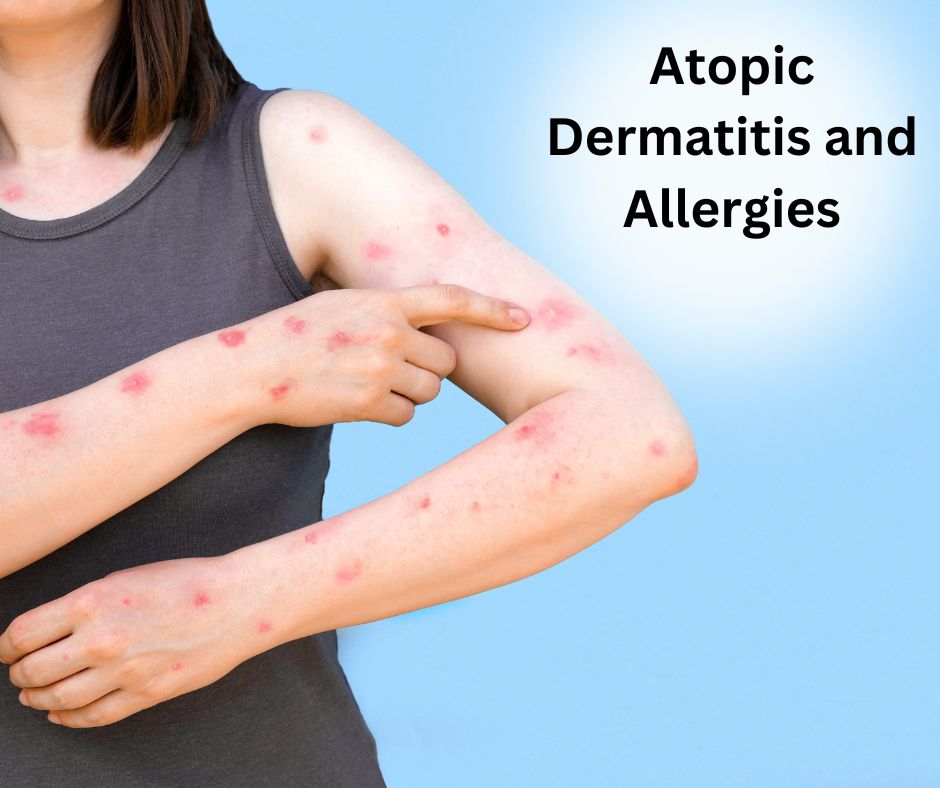Introduction
As we become more aware of the intricate relationship between our skin and overall health, it’s crucial to understand the connection between conditions like atopic dermatitis (eczema) and allergies. Atopic dermatitis is a chronic inflammatory skin condition that affects millions of people worldwide, and allergies often play a significant role in triggering or exacerbating its symptoms. In this article, we will explore the connection between atopic dermatitis and allergies and provide practical tips for managing their symptoms.
Understanding Atopic Dermatitis
Atopic dermatitis is a non-contagious, itchy skin condition characterized by redness, dryness, and scaling of the skin. It commonly appears in childhood and may persist into adulthood. While the exact cause is unknown, atopic dermatitis is believed to result from a combination of genetic and environmental factors.
The Role of Allergies
Allergies, particularly environmental allergies like pollen, dust mites, or pet dander, can trigger or worsen atopic dermatitis symptoms in some individuals. When the immune system overreacts to an allergen, it releases inflammatory chemicals that cause itching, redness, and inflammation of the skin. These allergic reactions can lead to flare-ups of atopic dermatitis, making the symptoms more severe and harder to manage.
Identifying Allergens
Identifying specific allergens that trigger your atopic dermatitis can be crucial in managing the condition effectively. Keeping a detailed record of your symptoms and possible triggers can help you pinpoint the allergens that affect you the most. Additionally, seeking professional help from a dermatologist or allergist can aid in conducting allergy tests to identify specific triggers.
Tips for Managing Symptoms
- Avoid Allergens: Once you have identified your triggers, take steps to minimize exposure to them. For example, if pollen is a trigger, try to stay indoors during peak pollen seasons or use air purifiers in your home. Regularly clean your living spaces to reduce dust mites, and consider hypoallergenic bedding if you are allergic to dust mites.
- Moisturize Regularly: Keeping the skin well-hydrated is crucial for managing atopic dermatitis. Use fragrance-free moisturizers regularly to maintain the skin’s moisture barrier and prevent dryness, which can trigger flare-ups.
- Practice Gentle Skincare: Opt for gentle, fragrance-free skincare products that are suitable for sensitive skin. Harsh soaps, cleansers, and scrubs can irritate the skin and worsen symptoms. When bathing, use lukewarm water instead of hot water and pat the skin dry instead of rubbing vigorously.
- Wear Breathable Fabrics: Choose clothing made from natural fibers such as cotton or silk, as they allow the skin to breathe. Avoid wearing tight or rough-textured clothing that can further irritate the skin.
- Stress Management: Stress can worsen atopic dermatitis symptoms. Incorporate stress management techniques into your daily routine, such as meditation, deep breathing exercises, or engaging in activities you enjoy.
- Seek Professional Advice: Consulting a dermatologist or allergist who specializes in skin conditions can provide personalized guidance and treatment options tailored to your needs. They may recommend topical corticosteroids, antihistamines, or other medications to manage symptoms effectively.
Conclusion
Understanding the connection between atopic dermatitis and allergies is essential for effectively managing the condition and reducing symptom flare-ups. By identifying allergens and taking necessary precautions to avoid exposure, practicing good skincare habits, and seeking professional advice, individuals can significantly improve their quality of life and minimize the impact of atopic dermatitis on their daily routines.

